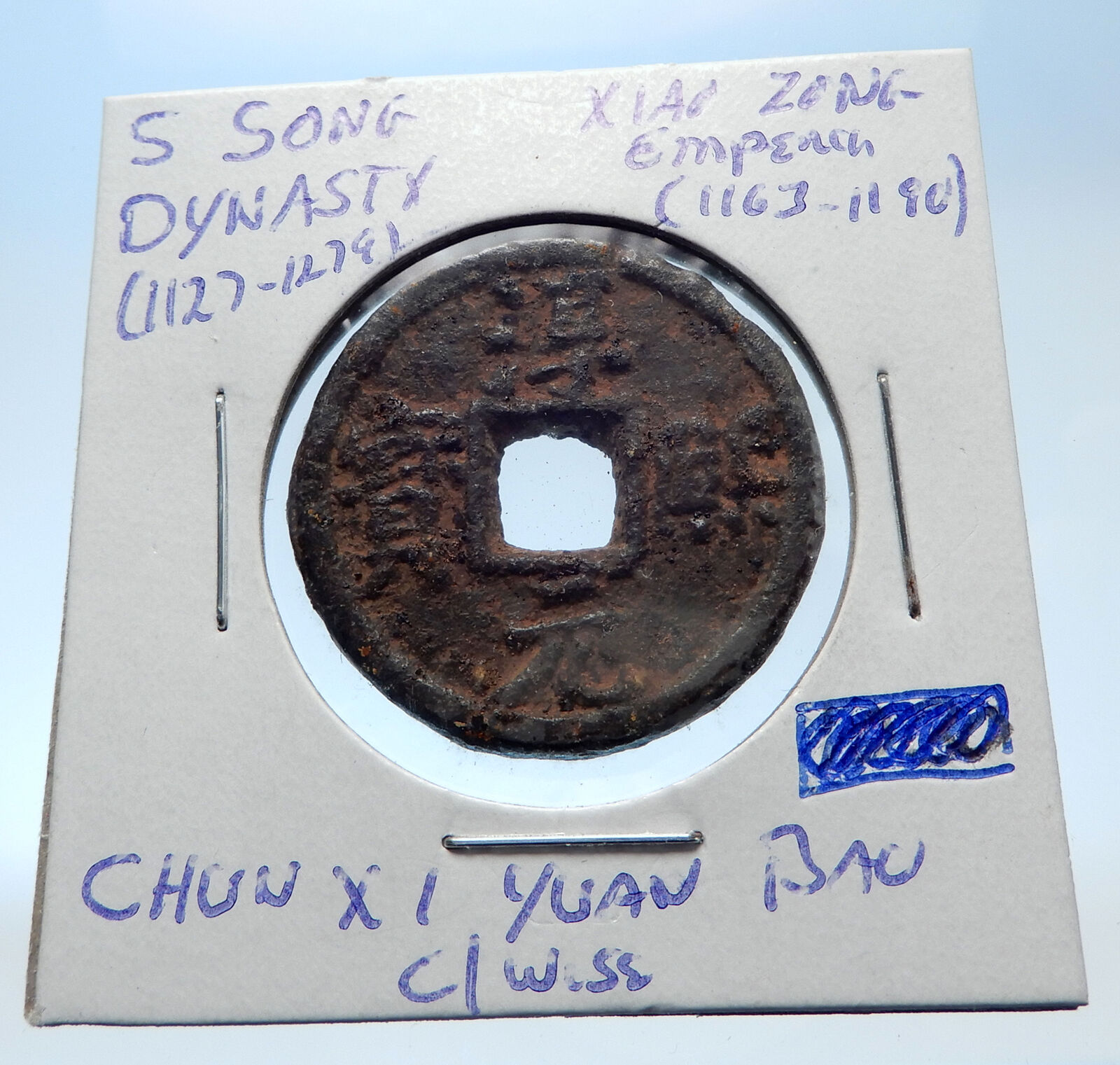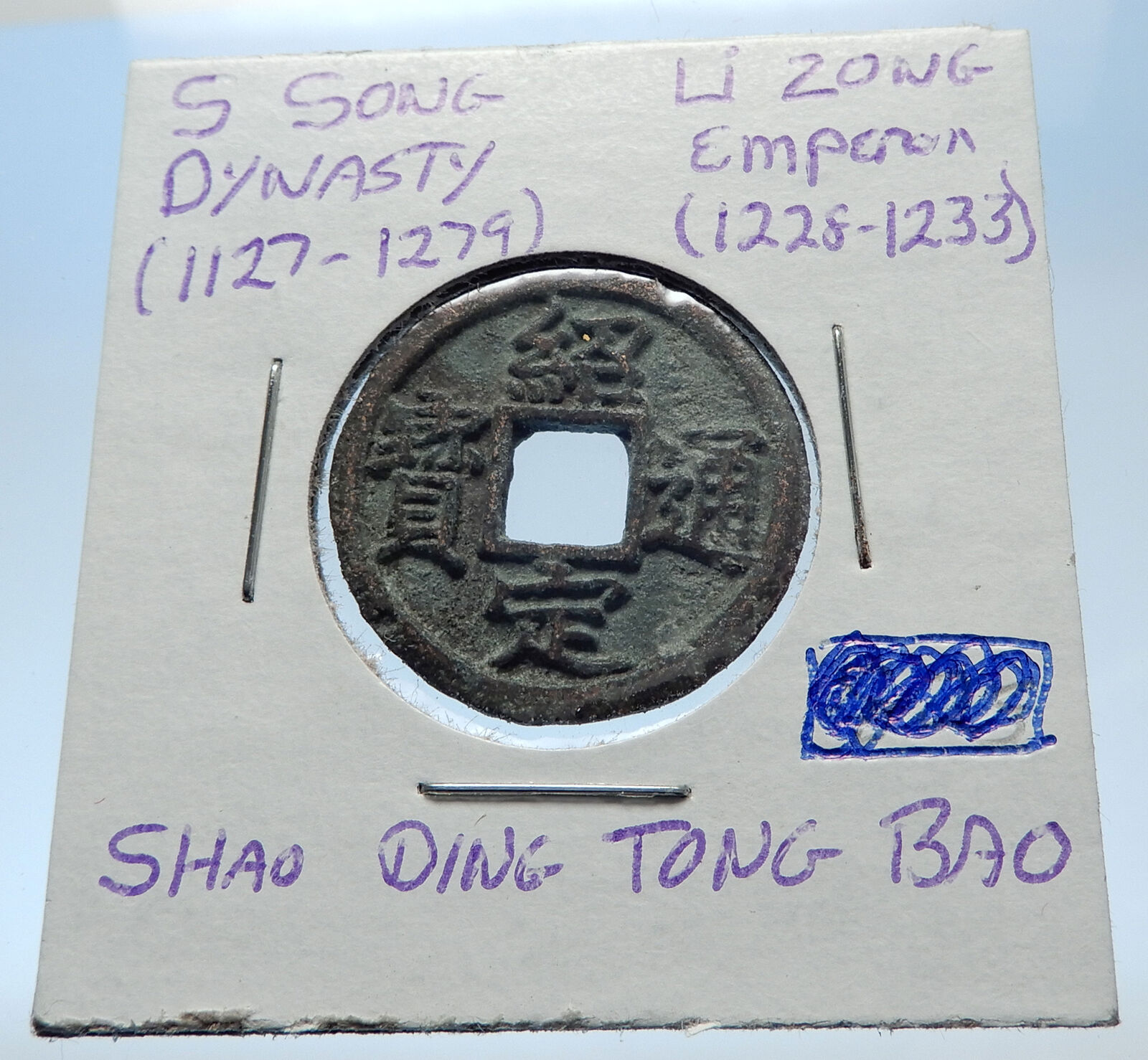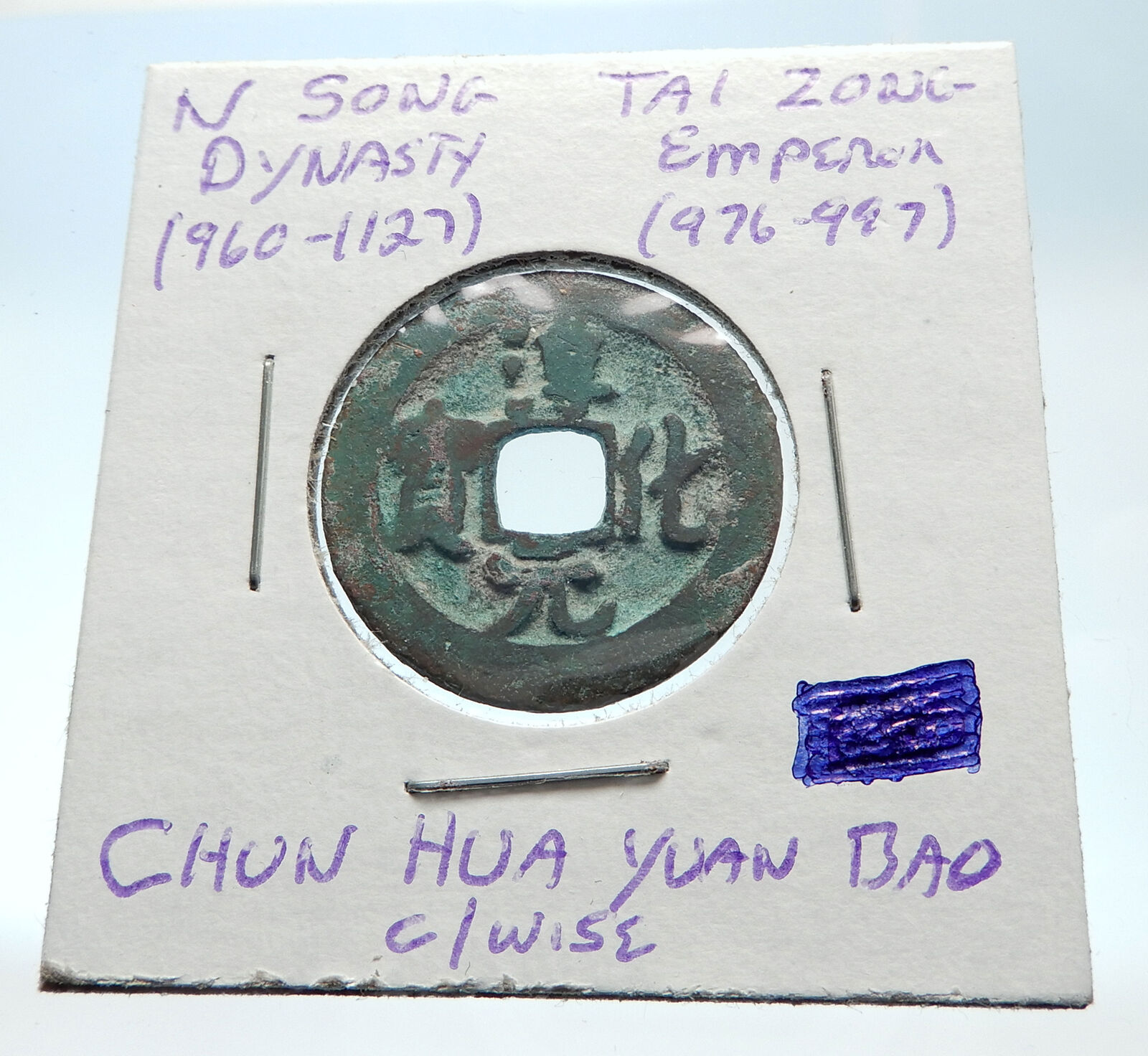|
China –
Warring States – Zhou Dynasty
State of Yan (300-220 BC)
Bronze Yi Hua
Cash Token
16mm, Struck
300-220 BC
Reference: H# 618
Chinese Symbols.
Inscription reversed.
You are bidding on the exact item pictured, provided with a Certificate of Authenticity and Lifetime Guarantee of Authenticity.
The State of Yan (Chinese: 燕; pinyin:
Yān; Old Chinese pronunciation: *ʔˤe was an
ancient Chinese state during the Zhou dynasty.
Its capital was Ji (later known as Yanjing and
now Beijing). During the Warring States period,
the court was also moved to another capital at
Xiadu at times.
The history of Yan began in the Western Zhou
in the early first millennium BC. After the
authority of the Zhou king declined during the
Spring and Autumn period in the 8th century BC,
Yan survived and became one of the strongest
states in China. During the Warring States
period from the 5th to 3rd centuries BC, Yan was
one of the last states to be conquered by the
armies of Qin Shihuang: Yan fell in 222 BC, the
year before the declaration of the Qin Empire.
Yan experienced a brief period of independence
after the collapse of the Qin dynasty in 207 BC,
but it was eventually absorbed by the victorious
Han.
During its height, Yan stretched from the
Yellow River (at the time, the river followed a
more northerly course than at present) to the
Yalu River and from the mountains of Shanxi to
the Liaodong Peninsula. As the most
north-eastern of all the Chinese states during
this time period, Yan faced incursions from
steppe nomads and built great walls.
 The Warring States period (simplified Chinese: 战国时代; traditional Chinese: 戰國時代; pinyin: Zhànguó Shídài) was an era in ancient Chinese history characterized by warfare, as well as bureaucratic and military reforms and consolidation. It followed the Spring and Autumn period and concluded with the Qin wars of conquest that saw the annexation of all other contender states, which ultimately led to the Qin state’s victory in 221 BC as the first unified Chinese empire, known as the Qin dynasty. The Warring States period (simplified Chinese: 战国时代; traditional Chinese: 戰國時代; pinyin: Zhànguó Shídài) was an era in ancient Chinese history characterized by warfare, as well as bureaucratic and military reforms and consolidation. It followed the Spring and Autumn period and concluded with the Qin wars of conquest that saw the annexation of all other contender states, which ultimately led to the Qin state’s victory in 221 BC as the first unified Chinese empire, known as the Qin dynasty.
Although different scholars point toward different dates ranging from 481 BC to 403 BC as the true beginning of the Warring States, Sima Qian’s choice of 475 BC is the most often cited. The Warring States era also overlaps with the second half of the Eastern Zhou dynasty, though the Chinese sovereign, known as the king of Zhou, ruled merely as a figurehead and served as a backdrop against the machinations of the warring states.
The “Warring States Period” derives its name from the Record of the Warring States, a work compiled early in the Han dynasty.
Cash was a type of coin of China and East Asia, used from the 4th century BC until the 20th century AD. Originally cast during the Warring States period, these coins continued to be used for the entirety of Imperial China as well as under Mongol, and Manchu rule. The last Chinese cash coins were cast in the first year of the Republic of China. Generally most cash coins were made from copper or bronze alloys, with iron, lead, and zinc coins occasionally used less often throughout Chinese history. Rare silver and gold cash coins were also produced. During most of their production, cash coins were cast but, during the late Qing dynasty, machine-struck cash coins began to be made. As the cash coins produced over Chinese history were similar, thousand year old cash coins produced during the Northern Song dynasty continued to circulate as valid currency well into the early twentieth century.
In the modern era, these coins are considered to be Chinese “good luck coins”; they are hung on strings and round the necks of children, or over the beds of sick people. They hold a place in various superstitions, as well as Traditional Chinese medicine, and Feng shui. Currencies based on the Chinese cash coins include the Japanese mon, Korean mun, Ryukyuan mon, and Vietnamese văn.
|





 The Warring States period (simplified Chinese: 战国时代; traditional Chinese: 戰國時代; pinyin: Zhànguó Shídài) was an era in ancient Chinese history characterized by warfare, as well as bureaucratic and military reforms and consolidation. It followed the Spring and Autumn period and concluded with the Qin wars of conquest that saw the annexation of all other contender states, which ultimately led to the Qin state’s victory in 221 BC as the first unified Chinese empire, known as the Qin dynasty.
The Warring States period (simplified Chinese: 战国时代; traditional Chinese: 戰國時代; pinyin: Zhànguó Shídài) was an era in ancient Chinese history characterized by warfare, as well as bureaucratic and military reforms and consolidation. It followed the Spring and Autumn period and concluded with the Qin wars of conquest that saw the annexation of all other contender states, which ultimately led to the Qin state’s victory in 221 BC as the first unified Chinese empire, known as the Qin dynasty.




